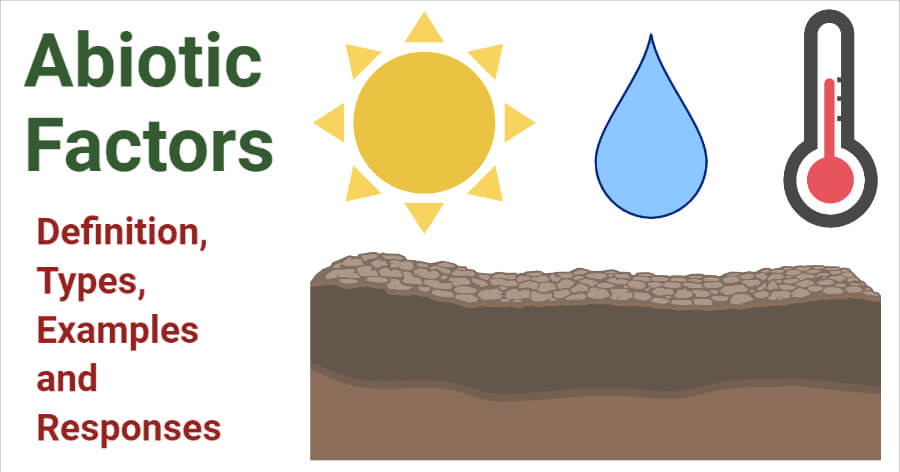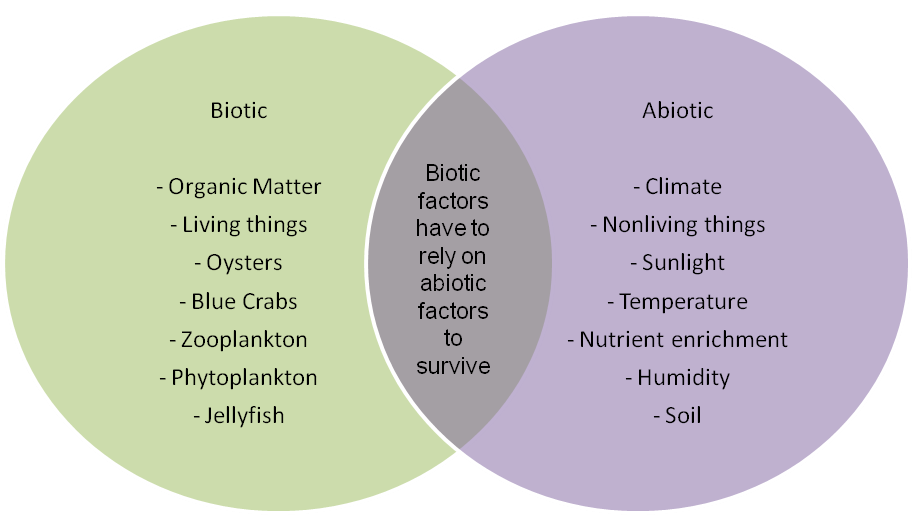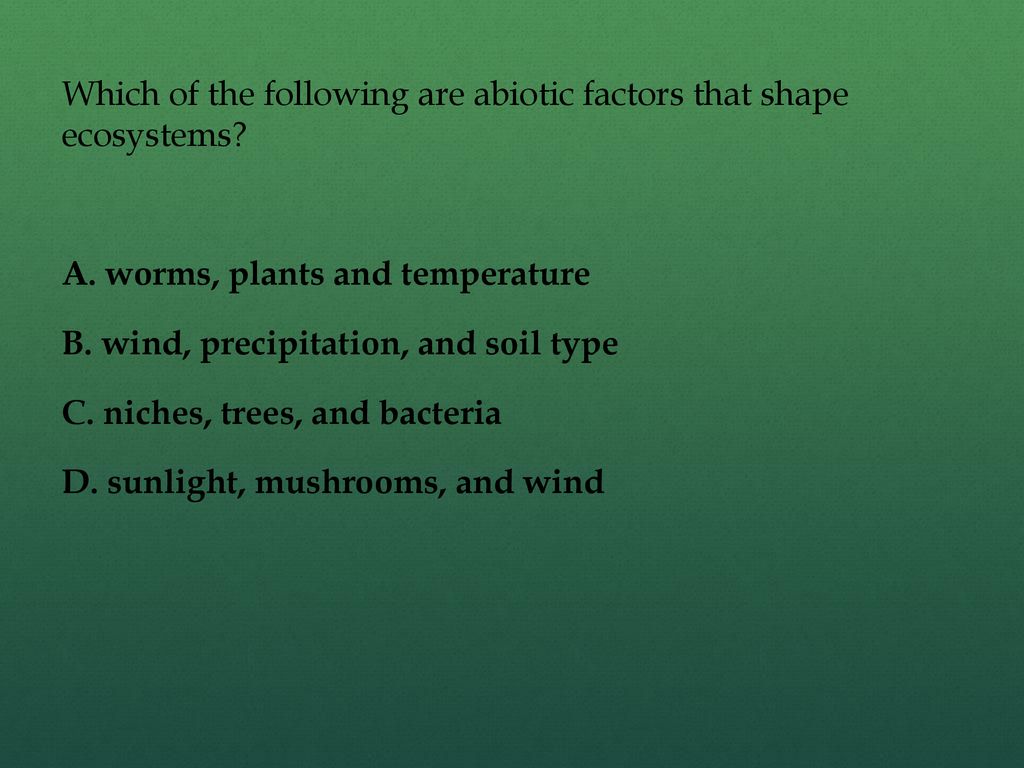Topic abiotic factors in an ecosystem examples: Discover the pivotal role of abiotic factors in ecosystems, exploring examples that illustrate their crucial impact on biodiversity and ecological balance.
Table of Content
- What are some examples of abiotic factors in an ecosystem?
- Understanding Abiotic Factors
- Examples of Abiotic Factors in Various Ecosystems
- Role of Abiotic Factors in Ecosystem Dynamics
- Abiotic Factors in Aquatic Ecosystems
- Abiotic Factors in Terrestrial Ecosystems
- Impact of Abiotic Factors on Biodiversity
- YOUTUBE: Abiotic Factors in Ecosystems: Water
- Abiotic Factors and Ecosystem Health
- Monitoring and Managing Abiotic Factors
- Adaptations to Abiotic Factors
- Climate Change and Abiotic Factors
What are some examples of abiotic factors in an ecosystem?
Some examples of abiotic factors in an ecosystem include:
- Temperature: The average temperature of an area can greatly influence the types of organisms that can survive there. Different species have specific temperature ranges in which they thrive.
- Light: The amount and intensity of sunlight can affect the growth and behavior of plants and animals in an ecosystem. Some organisms require specific light conditions to carry out their essential functions.
- Moisture: The availability of water in an ecosystem is crucial for the survival of organisms. It affects plant growth, nutrient availability, and the hydration of animals.
- Wind: Wind speed and direction can impact a variety of ecological processes, such as seed dispersal, pollination, and the distribution of organisms.
- Soil composition: The properties of soil, including its texture, pH level, and nutrient content, play a vital role in supporting plant growth and determining the types of plants that can thrive in a particular area.
- Topography: The physical features of the land, such as elevation, slope, and drainage patterns, can influence the distribution and movement of organisms within an ecosystem.
- Water currents: In aquatic ecosystems, the movement and flow of water can affect the distribution of nutrients, oxygen levels, and the dispersal of organisms.
- Chemical composition: Various chemical factors, such as the concentration of oxygen, carbon dioxide, and pollutants, can impact the health and survival of organisms in an ecosystem.
These abiotic factors interact with each other and with biotic factors, such as living organisms, to shape the overall structure and dynamics of an ecosystem.
READ MORE:
Understanding Abiotic Factors
Abiotic factors are non-living components that play a key role in the environment, influencing the structure and function of ecosystems. They are essential elements that contribute to the growth, survival, and reproduction of living organisms.
- Temperature: It significantly affects metabolic rates and the distribution of life.
- Water: Its availability is crucial for most life forms, influencing their physiological and ecological processes.
- Light: Solar radiation is necessary for photosynthesis, driving the primary productivity of ecosystems.
- Soil and Rock: The physical and chemical composition of the ground supports various life forms and affects plant growth.
- Atmospheric Gases: Oxygen, carbon dioxide, and nitrogen are vital for life processes, including respiration and photosynthesis.
- Wind: It can influence temperature and moisture distribution and affect the dispersal of seeds and pollen.
These factors are interconnected and can vary widely, creating diverse habitats that support different types of organisms. Understanding abiotic factors is crucial for studying ecosystems and for the conservation of biodiversity.

Examples of Abiotic Factors in Various Ecosystems
Abiotic factors vary greatly across different ecosystems, each playing a unique role in shaping the environment and the life it supports. Here are examples illustrating how these factors influence various ecosystems:
- Deserts: High temperature and low water availability dominate, influencing the types of plants and animals that can survive.
- Tropical Rainforests: High humidity and temperature, along with abundant rainfall, create conditions for a wide variety of plant and animal life.
- Oceans: Salinity, water temperature, and depth affect the distribution of marine organisms. Light penetration influences the zones of life, from the photic zone where photosynthesis can occur to the aphotic zone, where light does not reach.
- Arctic Tundra: Extremely low temperatures, permafrost, and short growing seasons define the abiotic environment, limiting the types of species that can thrive.
- Mountains: Altitude affects temperature and oxygen levels, creating different life zones as elevation increases.
- Rivers and Lakes: Flow rate, water clarity, and nutrient content are critical abiotic factors influencing aquatic ecosystems.
Each of these examples demonstrates the significant impact abiotic factors have on the diversity and distribution of ecosystems around the globe.
Role of Abiotic Factors in Ecosystem Dynamics
Abiotic factors play a crucial role in shaping the dynamics of ecosystems, influencing the distribution, behavior, and survival of organisms. These factors can both enable life and pose challenges that organisms must adapt to. Here’s how abiotic factors contribute to ecosystem dynamics:
- Regulation of Biological Processes: Temperature and water availability directly influence physiological processes of organisms, such as metabolism, growth, and reproduction.
- Determining Species Distribution: The presence or absence of certain abiotic conditions can limit where species are able to live. For example, only species adapted to low water availability can inhabit deserts.
- Influencing Community Structure: Abiotic factors such as soil type and light availability determine the types of plants that can grow in an area, which in turn influences the animal species that can live there.
- Driving Ecosystem Productivity: Light intensity affects the rate of photosynthesis, which is the basis for the primary productivity of an ecosystem. This sets the foundation for the food web.
- Shaping Ecosystem Responses to Changes: Abiotic factors are often altered by climate change, pollution, and other human activities, which can lead to shifts in ecosystem structure and function.
Understanding the role of abiotic factors is essential for managing ecosystems and for predicting how they may change over time.

Abiotic Factors in Aquatic Ecosystems
Aquatic ecosystems, covering oceans, lakes, rivers, and wetlands, are influenced by a unique set of abiotic factors that affect the life forms residing in these habitats. Understanding these factors is essential for the conservation of aquatic biodiversity and the management of water resources.
- Water Temperature: It influences metabolic rates of aquatic organisms and affects the solubility of oxygen in water.
- Salinity: The concentration of salts in water can affect the osmoregulation processes of marine and freshwater species.
- Light Penetration: Determines the depth at which photosynthesis can occur, influencing the distribution of photosynthetic organisms.
- Currents and Tides: These factors shape the physical environment, influencing nutrient distribution and the movement patterns of aquatic organisms.
- pH Levels: The acidity or alkalinity of water can affect the biological activities and survival of aquatic life.
- Dissolved Oxygen: Essential for respiration in aquatic organisms, its concentration is influenced by temperature and water movement.
- Nutrient Availability: The presence of nitrogen, phosphorus, and other elements is crucial for the growth of aquatic plants and phytoplankton.
These abiotic factors are interconnected, each playing a vital role in the health and productivity of aquatic ecosystems. Their balance is crucial for sustaining the diverse forms of life in aquatic environments.
Abiotic Factors in Terrestrial Ecosystems
Terrestrial ecosystems, ranging from forests and grasslands to deserts and tundras, are influenced by a variety of abiotic factors. These factors play a critical role in shaping the environment, influencing the types of species that can thrive, and determining the overall productivity of the ecosystem.
- Soil Composition: The type of soil affects water retention, nutrient availability, and the types of plants that can grow, which in turn supports various animal species.
- Temperature: It affects the growth and survival of organisms, with different species adapted to varying temperature ranges.
- Light: Sunlight is necessary for photosynthesis, which supports the base of the food web in terrestrial ecosystems.
- Precipitation: The amount and distribution of rainfall influence the types of vegetation and animal life that an ecosystem can support.
- Wind: It can affect plant growth, evaporation rates, and temperature, influencing the distribution of species.
- Altitude: Higher elevations have cooler temperatures and different oxygen levels, affecting species distribution and adaptation.
These abiotic factors interact in complex ways, creating a diverse array of habitats within terrestrial ecosystems. Understanding these interactions is crucial for conservation efforts and for predicting the impacts of environmental changes.

Impact of Abiotic Factors on Biodiversity
Abiotic factors are fundamental in shaping biodiversity within ecosystems. They not only determine the survival and distribution of species but also influence the complexity of interactions within biological communities. Here"s how abiotic factors impact biodiversity:
- Determining Habitats: The presence of specific abiotic conditions, such as soil type and climate, defines the habitats available for different species, directly influencing biodiversity patterns.
- Species Distribution: Variations in temperature, moisture, and other abiotic factors limit the geographical distribution of species, contributing to the unique biodiversity of each ecosystem.
- Adaptation and Evolution: Over time, the need to survive under certain abiotic conditions drives the evolution of species, leading to a greater diversity of life forms adapted to various environments.
- Ecosystem Productivity: Factors such as sunlight, water, and nutrient availability affect primary productivity, which supports diverse food webs and complex ecosystems.
- Resilience and Stability: The diversity of abiotic conditions within an ecosystem can enhance its resilience to disturbances, allowing for a more stable biodiversity over time.
The interplay between abiotic factors and living organisms is a dynamic process that fosters the rich tapestry of life on Earth. Understanding this relationship is crucial for conservation efforts and managing the impacts of climate change on biodiversity.
Abiotic Factors in Ecosystems: Water
Examples: Explore a compilation of fascinating and real-life examples that will leave you in awe! From heartwarming acts of kindness to mind-boggling scientific discoveries, this video will surely inspire and captivate you.
Abiotic Factors in Ecosystems: Soil and Minerals
Soil and Minerals: Discover the hidden world beneath your feet as we delve into the wonders of soil and minerals! Get ready to be amazed by the intricate processes that shape our landscapes and sustain life on Earth. Join us on this educational journey and unlock the secrets of the Earth\'s foundation.
Abiotic Factors and Ecosystem Health
The health of an ecosystem is closely linked to the balance and stability of its abiotic factors. These non-living components are crucial in supporting life, maintaining ecological processes, and ensuring the sustainability of ecosystems. Here"s how abiotic factors contribute to ecosystem health:
- Maintaining Water Quality: Clean water is essential for all forms of life. Factors such as pH, salinity, and dissolved oxygen levels must be within certain ranges to support aquatic ecosystems.
- Regulating Climate Conditions: Temperature and precipitation influence the types of vegetation and animal life in an area, which in turn affect carbon sequestration and climate regulation.
- Supporting Soil Health: Soil composition, including its mineral content and structure, affects its fertility and the ability to support plant life, which is the foundation of terrestrial ecosystems.
- Ensuring Air Quality: Atmospheric conditions, including the presence of pollutants, impact the health of both flora and fauna, influencing respiratory health and photosynthetic efficiency.
- Facilitating Nutrient Cycling: The availability of essential nutrients like nitrogen and phosphorus supports the growth of producers, which are the base of the food web, thereby influencing the entire ecosystem.
Monitoring and managing abiotic factors are key to protecting ecosystem health, preventing biodiversity loss, and ensuring the resilience of habitats against environmental changes and human impacts.

Monitoring and Managing Abiotic Factors
Effective ecosystem management requires careful monitoring and management of abiotic factors to ensure environmental sustainability and the conservation of biodiversity. Here are strategies and techniques for achieving this:
- Environmental Monitoring: Regular measurement of water quality, soil conditions, air quality, and climate data to assess changes or trends in abiotic factors.
- Climate Change Mitigation: Implementing policies to reduce greenhouse gas emissions and adopting practices that increase carbon sequestration to combat global warming and its effects on ecosystems.
- Water Resource Management: Sustainable management of water resources through conservation practices, pollution control, and restoration of natural water cycles to maintain aquatic ecosystem health.
- Soil Conservation: Employing techniques such as no-till farming, reforestation, and controlled grazing to prevent soil erosion, maintain soil fertility, and support plant growth.
- Urban Planning: Designing cities in ways that consider green spaces, water management, and pollution control to reduce urban heat islands and support urban biodiversity.
- Policy and Legislation: Developing and enforcing laws and regulations that protect the environment from pollution, overexploitation, and degradation.
By closely monitoring and proactively managing abiotic factors, we can preserve ecosystem functions, protect biodiversity, and ensure the health and well-being of our planet for future generations.
Adaptations to Abiotic Factors
Organisms have developed a wide range of adaptations to survive the challenges posed by abiotic factors in their environments. These adaptations are crucial for their survival, reproduction, and the overall functioning of ecosystems. Here are examples of how species have adapted to various abiotic factors:
- Temperature Adaptations: Animals and plants have developed insulation, behavioral changes, and physiological mechanisms to regulate body temperature and survive extreme cold or heat.
- Water Availability: Desert plants like cacti store water, while some animals are adapted to extract moisture from their food or minimize water loss.
- Light Adaptations: Deep-sea organisms produce bioluminescence for communication and predation, while forest understory plants have adapted to low light levels for photosynthesis.
- Soil and Nutrient Utilization: Some plants have adapted to poor soil conditions by developing symbiotic relationships with bacteria or fungi that help them access nutrients.
- Salinity Adaptations: Marine organisms regulate their internal salt concentration, and some plants can excrete excess salt to cope with high salinity levels.
- Wind and Aerodynamic Adaptations: Plants and animals have developed structures to reduce wind resistance or to use wind for dispersal.
These adaptations not only illustrate the incredible diversity of life but also highlight the intricate balance between organisms and their abiotic environment. Understanding these adaptations is key to studying evolutionary processes and ecosystem dynamics.
READ MORE:
Climate Change and Abiotic Factors
Climate change is having a profound impact on abiotic factors, altering ecosystems and the biodiversity they support. The changes in temperature, precipitation patterns, sea levels, and carbon dioxide concentrations are reshaping the physical and chemical environment, with significant implications for all forms of life. Here"s how climate change is affecting abiotic factors:
- Temperature Increases: Rising global temperatures are affecting weather patterns, heat waves, and cold spells, impacting species" survival and distribution.
- Altered Precipitation Patterns: Changes in rainfall are affecting water availability, influencing plant growth and water supply for animals and humans.
- Sea Level Rise: The expansion of warmer sea waters and melting ice are leading to higher sea levels, affecting coastal ecosystems and habitats.
- Increased Carbon Dioxide: Elevated CO2 levels are leading to ocean acidification, affecting marine life, and altering photosynthesis rates in plants.
- Changing Wind Patterns: Shifts in wind patterns can alter temperature and moisture distribution, affecting weather and climate on a regional scale.
These changes in abiotic factors due to climate change require urgent attention and action to mitigate impacts on ecosystems and biodiversity. Understanding these dynamics is crucial for developing effective conservation and adaptation strategies.
Exploring abiotic factors reveals the intricate balance of ecosystems and underscores the importance of preserving our natural world for future generations. Join us in understanding and protecting the delicate web of life on Earth.






